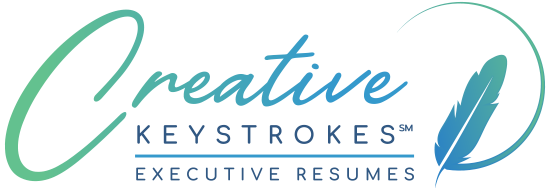Personal Information to Include in Your Executive Resume – and 15 Items to OMIT
Essential Personal Information to Include in Your Resume
Perhaps the most indispensable part of your executive resume is a certain category of personal information – the kind that tells the reader who you are and how to contact you.
Your Full Name
You’ll want to start by giving your full name, at the top of your resume in bold and a slightly larger font size. It can be helpful to recruiters and hiring managers following up with you to also include the nickname by which you prefer to be addressed. An example of this might be:
John (Jack) C. Jones.
Next, you need to make sure that you are easy to contact. Important information here includes:
Phone Number
For most of us, our mobile number is going to be the number where we are most readily reached, and to avoid confusion it is generally best to provide just one number. If desired, you can also include your home number, but do not give out your work number to avoid looking unprofessional and/or bringing disaster on yourself if the wrong person answers the call or overhears.
Again, this should be your personal email address and not your work email if at all possible, since others may see it or it may even be monitored by your employer. And do make sure that it sounds professional without cutesy phrasing or offensive, political, or sexual innuendo. It is also best to avoid old domains like AOL, since these will instantly age you and make it appear you are not tech savvy.
Physical Address
Due to privacy considerations and the very real dangers of identity theft, most executives leave off the street name and number from the address. However, you will still want to list your city, state, and zip code, as recruiters and automated systems often screen resumes based on geography. On that note, if you are attempting to relocate, it can be a good idea to get a mailbox at a UPS location or other virtual address in the city to which you wish to move.
Website
If you have a professional website or business-related blog, by all means include it.
LinkedIn Profile Link
A must, as nearly all recruiters use LinkedIn as a primary recruiting tool today, and the first thing they will want to do is look you up on LinkedIn.
Personal Information to ALWAYS Leave Out
Social Security Number
Religious Affiliation/Spiritual Beliefs and Political Affiliation (unless you are applying for a role with a religious or political organization).
Race
Gender or Gender Reassignment
Disability
Pregnancy Status
Sexual Orientation
Criminal Record
Personal Information to Leave Out Unless Customary for a Foreign CV
Unless you are seeking employment in a foreign country where it is customary or required, leave out potentially discriminatory or damaging information such as:
Marital Status, including your spouse’s name, or the names, ages, or number of children
Birth Date
Nationality
If you are of foreign origin or your name brings that into question, you may wish to include your status as U.S. Citizen, Permanent Resident, or Green Card holder, so potential employers will be assured of your eligibility for hire.
Employers’ Contact Info
Do you REALLY want people calling them before they have talked to you, or worse yet, alerting your current employer that you are looking?
Salary History
Your resume’s purpose is to showcase your capabilities and potential value to an employer. Don’t show your cards too soon. Salary is a topic to be discussed once interest is established on both sides. See Play Your Salary Cards Close to the Vest for more on this.
References
Again, references should come into play well into the interviewing process. But you can get some advantage out of them early on by including your LinkedIn profile at the top of the resume. Employers and recruiters can easily view the recommendations you have there. For more on this, see Why Can’t I List References on my Executive Resume?
Physical Characteristics
Leave out statistics such as height, weight, body build/fitness, and hair or eye color.
Personal Information That MAY Be Beneficial to Include
Hobbies
In general, these are best relegated to the resume of a newcomer to the workforce, but there can be exceptions.
If your hobby is unusual and likely to spark interest and a conversation, by all means include it.
If it is something that might strike a common chord (such being an avid amateur golfer), you can include it, too.
However, do not include hobbies and interests if doing so would require leaving out other information more directly related to your experience and qualifications, in order to keep your resume in the desired number of pages or avoid an awkward carryover onto another page.
Your Photo
Most career experts and human resources professionals advise against including a photo on your executive resume, except in very limited situations. In some foreign countries, a photo may be customary or mandatory, but not in the U.S., UK, Ireland, or Canada.
Possible exceptions to this rule could be for a field where your appearance is of great importance, such as high-level public relations, communications, or diplomatic roles. See my recent article on photos in executive resumes for more information on this topic.
Decades-Old Graduation or Degree Dates
Just as it is generally best to take your work history dates back a maximum of 15-20 years, if your degree or graduation dates are past that timeframe, it is usually best to leave them out.
Other Information to Leave Out of Your Executive Resume
See my LinkedIn Pulse Article, What to Leave Out of Your Executive Resume and my blog post, A Baker’s Dozen Items NOT to Include in Your Executive Resume to learn more about information that does not properly belong in your resume.

